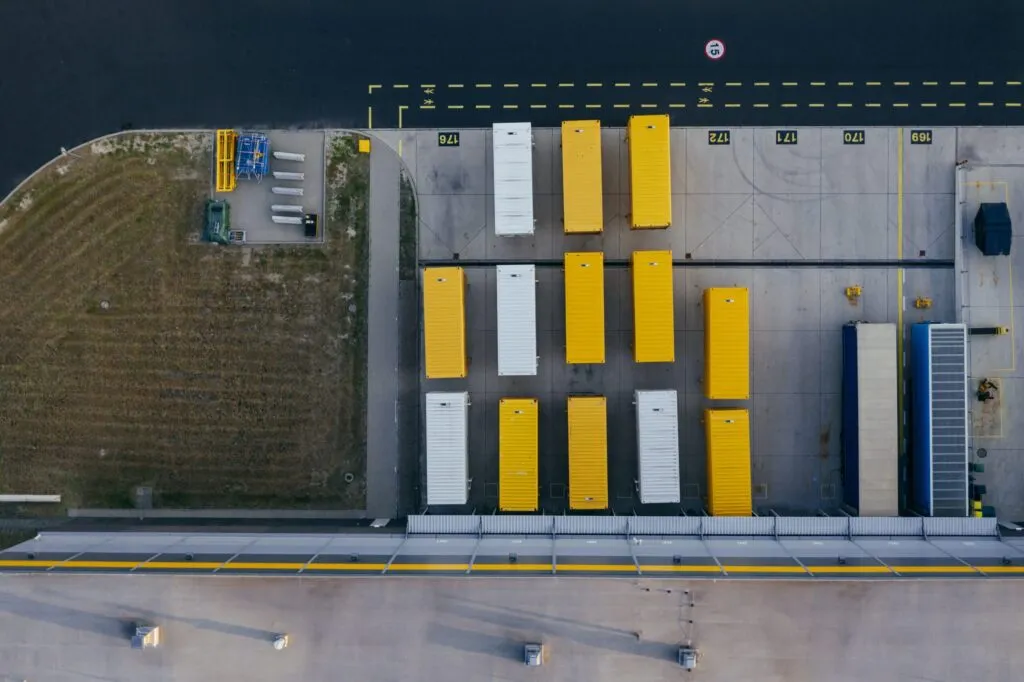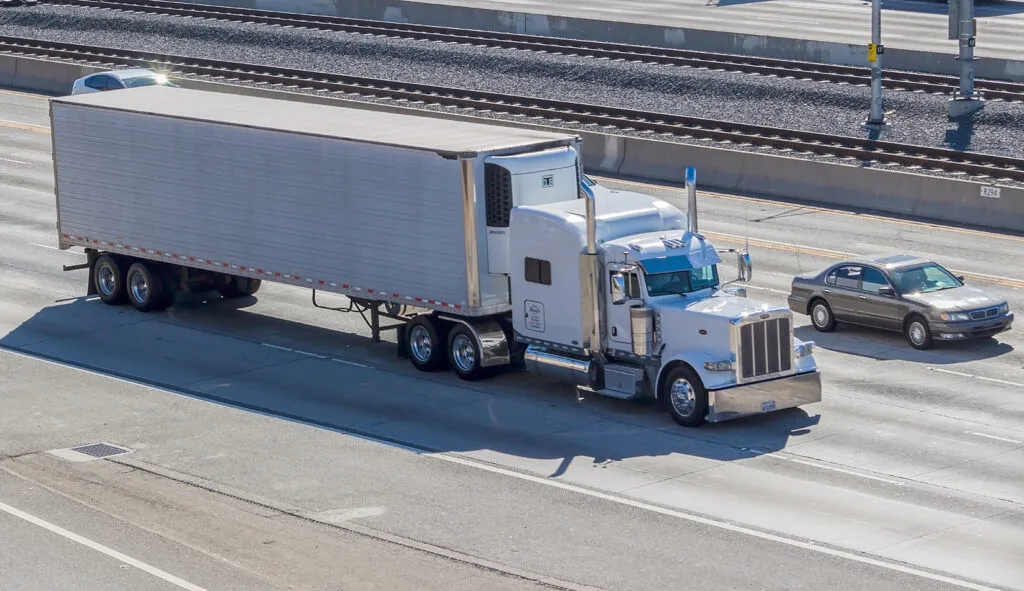Shipping LTL vs. Partial Truckload (PTL)

Opting for the services of a trucking company, where a standard trailer is efficiently packed with cargo and dispatched directly to its destination, is one method of moving freight. Truckload shipping, sometimes referred to as full truckload or FTL is a dependable, quick shipping solution that is ideally suited for sizable businesses handling significant cargo quantities.
However, what if you ship freight in lower quantities? Shippers have typically been forced to choose between paying for a truckload of freight even when there wasn’t enough for the truck to fill it or taking a less-than-truckload alternative that wasn’t as reliable.
What is LTL Shipping?
Transporting relatively small freight without using an entire vehicle is what is called LTL shipping. LTL carriers combine numerous smaller shipments from various customers into a single truck rather than utilizing a complete truck for a single consignment. Every shipment is processed independently, and the weight, size, and distance of the shipment determine the cost.
Important Features of LTL Shipping:
- Cost-Effective for Small Shipments. Businesses with less freight than would fill a full truck might save money by using LTL.
- Consolidation. To maximize space use, shipments from several clients are combined into a single vehicle.
- Freight Class. Based on the cargo type being carried, its density, value, and other elements, LTL shipments are classified according to their freight class.
What is PTL Shipping?
A shipping option that sits in between LTL and full truckload shipment is called partial truckload, sometimes referred to as shared truckload or STL. A partial truckload involves several shippers sharing space in the same vehicle with compatible freight. In contrast to LTL, which combines shipments from multiple clients, partial truckload is more concerned with making the most of available capacity for a smaller number of larger shipments.
Important Features of a Partial Truckload:
- Space Efficiency: By consolidating shipments from several shippers onto a single truck, a partial truckload maximizes available space. Shared truck space is available to shippers whose freight is compatible.
- Reduced Handling: Compared to LTL, partial truckload can lead to shorter transit times and a lower chance of freight damage because there are fewer stops and handling locations.
- Volume-Based Pricing: Rather than only considering a shipment’s weight, partial truckload pricing frequently takes into account the amount of space the package takes up inside the truck.

Similarities of LTL vs. PTL Shipping
While LTL (Less Than Truckload) and PTL (Partial Truckload) shipping methods have distinct differences, they also share some similarities.
Freight Consolidation
LTL: Involves combining several smaller shipments from various clients onto a single truck. Individual shippers’ expenses are decreased, and vehicle space is optimized thanks to this consolidation.
PTL: PTL also entails consolidation, which is combining cargo from several shippers onto a single vehicle. To maximize capacity and efficiency, PTL, on the other hand, concentrates on fewer but larger compatible cargoes sharing the vehicle.
Cost Efficiency
LTL: Because the expense is split among several shippers, LTL is cost-efficient for smaller shipments. The shippers pay for the space that shipments take up in the truck.
PTL: Partial Truckload offers more economical shipping for bigger loads that don’t take up the whole standard trailer. Shippers who have compatible freight share the vehicle, which lowers the cost of shipping for each shipment.
Environmentally Friendly
LTL: LTL helps to minimize the number of trucks on the road, which results in lower emissions and a smaller carbon footprint. It is done by combining smaller shipments into one truck.
PTL: Similarly, Partial Truckload minimizes the number of vehicles required to transport several freights, which is good for the environment.
Flexibility
LTL: For companies with different shipment sizes, LTL shipping provides flexibility. Shippers don’t have to load a whole vehicle when sending various-sized packages.
PTL: Provides shippers with larger cargoes that might not fill an entire vehicle with more flexibility. Shippers don’t have to give up efficiency to share truck space.
Reduced Handling
LTL: During consolidation, LTL shipments are handled at several stages, but the procedure is streamlined to minimize handling and lower the possibility of damage.
PTL: Compared to conventional LTL shipments, partial truckload shipments have fewer handling locations, which minimizes the risk of damage.
Optimization of Truck Space
LTL: By grouping smaller shipments, LTL maximizes truck space and makes sure that trucks are used effectively.
PTL: Partial Truckload maximizes the use of available space by grouping bigger, suitable items into a single truck.

Key Differences Between LTL vs. PTL Shipping
The size of shipments that LTL and PTL handle, the consolidation procedure, the pricing structure, the handling locations, the transit duration, and the suitability for various types of freight are all different. In order to maximize transportation efficiency, shippers might select one of the two methods based on the unique requirements, compatibility, and size of their goods.
Shipment Size
LTL: LTL is intended for smaller shipments for which a full truck is too large. These shipments typically come palletized, saving on storage space.
PTL: This option works well for larger shipments that don’t occupy an entire truck. Shippers who have comparable freight can maximize efficiency for larger loads by sharing space in the same truck.
Consolidation Process
LTL: LTL shipments are combined into a single vehicle from multiple clients. These cargoes are small and originate from various locations, resulting in multiple stops.
PTL: Consolidating goods that are compatible in size, weight, and destination is the main goal of PTL. Sharing a truck with other shippers carrying comparable loads shortens handling and transit times.
Handling Points
LTL: Because individual shipments are sorted and combined at terminals, LTL shipments could require additional handling locations.
PTL: Because partial truckload shipments are compatible and compacted with few stops, they require fewer handling locations.
Pricing Structure
LTL: The weight, size, and freight class of each consignment are taken into consideration while calculating LTL charges. Shippers cover the cost of the space their cargo takes up in the truck.
PTL: The volume and weight of the bundled shipments determine the partial truckload cost. Larger loads frequently result in cost savings for shippers because they only pay for the space their consolidated freight takes up in the vehicle.
Transit Time
LTL: Because of the numerous stops and handling locations involved in consolidation and delivery, LTL shipments may take longer to reach their destination.
PTL: Partial truckload cargoes, particularly those that are compatible, frequently have quicker transit times since they include fewer stops.
Efficiency and Optimization
LTL: LTL optimizes truck space by consolidating smaller shipments, allowing multiple shippers to share a single truck.
PTL: Partial Truckload optimizes space by combining larger, compatible shipments, maximizing the utilization of the truck’s capacity for specific routes.
Suitability
LTL: Serving a broad spectrum of industries, LTL is perfect for companies with smaller and more varied shipments.
PTL: Partial Truckload offers the most efficient transportation for larger shipments that still do not occupy a full standard trailer. This method is most appropriate for shippers with compatible, heavier loads.

Choosing the Best Mode for Your Load
The particular requirements of the consignment will determine whether to choose LTL or PTL shipping. LTL can be an affordable option for smaller, more varied loads, enabling companies to split truck space and cut costs. Conversely, Partial Truckload (PTL) enables efficiency and simplified transit with fewer handling points for larger shipments that don’t need a full truck. You must have a complete awareness of your cargo and its transportation needs in order to make the best choice.
Carolina Logistics is an expert in both LTL and PTL shipping techniques, and we use this knowledge to assist companies in navigating the difficult world of freight transportation. Our skilled staff can evaluate your requirements, streamline your logistics plan, and guarantee that your shipments arrive at their destinations on time and within budget. Put your trust in Carolina Logistics for all of your transportation needs and benefit from seamless shipping solutions that are customized to meet your specific demands.
